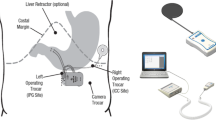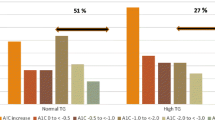Abstract
Obesity is a growing health problem worldwide with a major impact on health and healthcare expenditures. Medical therapy in the form of diet and pharmacotherapy has limited effect on weight. Standard bariatric surgery is effective but is associated with morbidity and mortality, creating an unmet need for alternative therapies. One such therapy, the application of electrical stimulation to the stomach, has been studied extensively for the last two decades. Though pulse parameters differ between the various techniques used, the rationale behind this assumes that application of electrical current can interfere with gastric motor function or modulate afferent signaling to the brain or both. Initial studies led by industry failed to show an effect on body weight. However, more recently, there has been a renewed interest in this therapeutic modality with a number of concepts being evaluated in large human trials. If successful, this minimally invasive and low-risk intervention would be an important addition to the existing menu of therapies for obesity.

Similar content being viewed by others
References
Papers of particular interest, published recently, have been highlighted as: • Of importance
WHO Fact sheet N311, May 2014
Cunningham SA, Kramer MR, Venkat Narayan KM. Incidence of childhood obesity in the United States. N Engl J Med. 2014;370(5):403–11.
Ogden CL, Carroll MD, Kit BK, Flegal KM. Prevalence of childhood and adult obesity in the United States. J Am Med Assoc. 2014;311(8):806–14.
Dee A, Kearns K, O’Neill C, Sharp L, Staines A, O’Dwyer V, et al. The direct and indirect costs of both overweight and obesity: a systematic review. BMC Res Notes. 2014;7:242.
Finkelstein EA, Trogdon JG, Cohen JW, Dietz W. Annual medical spending attributable to obesity payer-and-service-specific estimates. Health Aff (Millwood). 2009;28:w822–31.
Kelly T, Yang W, Chen CS, Reynolds K, He J. Global burden of obesity in 2005 and projections to 2030. Int J Obes. 2008;32(9):1431–7.
Jensen MD, Ryan DH, Apovian CM, Ard JD, Comuzzie AG, Donato KA, et al. 2013 AHA/ACC/TOS guideline for the management of overweight and obesity in adults: a report of the American College of Cardiology/American Heart Association Task Force on Practice Guidelines and The Obesity Society. Circulation. 2014;129(25 Suppl 2):S102–38. Annotation: A critical assessment of the medical and surgical management of overweight and obesity. The document is endorsed by many national societies and associations.
Guaraldi F, Pagotto U, Pasquali R. Predictors of weight loss and maintenance in patients treated with antiobesity drugs. Diabetes Metab Syndr Obes Tarets Ther. 2011;4:229–43.
Sarwer DB, Green AVS, Vetter ML, Wadden TA. Behavior therapy for obesity: where are we now? Current opinion in endocrinology. Diabetes Obes. 2009;16(5):347–52.
Wadden TA, Sternberg JA, Letizia KA, Stunkard AJ, Foster GD. Treatment of obesity by very low calorie diet, behavior therapy, and their combination: a five-year perspective. Int J Obes. 1989;13 Suppl 2:39–46.
Yanovski SZ, Yanovski JA. Long-term drug treatment for obesity. J Am Med Assoc. 2014;311(1):74–86.
Weintraub M, Sundaresan PR, Cox C. Long-term weight control study. Individual participant response patterns. Clin Pharmacol Ther. 1992;51(5):619–33.
Chang SH, Stoll CRT, Song J, Varela JE, Eagon CJ, Colditz GA. The effectiveness and risks of bariatric surgery an updated systematic review and meta-analysis. 2003-2012. JAMA Surg. 2014;149(3):275–87. Annotation: Most recent assessment of mortality, complications, reoperations, weight loss, and remission following bariatric surgery, using up-to-date, comprehensive data and meta-analytic techniques.
Birkmeyer JD, Finks JF, O’Reilly A, Oerline M, Carlin A, Nunn A, et al. Surgical skill and complication rates after bariatric surgery. N Engl J Med. 2013;369:1434–42.
Buchwald H, Oien DM. Metabolic/bariatric surgery worldwide 2011. Obes Surg. 2013;23(4):427–36.
Kumar N, Thompson CC. Endoscopic solutions for weight loss. Curr Opin Gastroenterol. 2011;27:407–11.
Coté GA, Edmundowicz SA. Emerging technology: endoluminal treatment of obesity. Gastrointest Endosc. 2009;70(5):991–9.
Pullan A, Cheng I, Yassi R, Buist M. Modelling gastrointestinal bioelectric activity. Prog Biophys Mol Biol. 2004;85(2–3):523–50.
Camilleri M. Integrated upper gastrointestinal response to food intake. Gastroenterology. 2006;131:640–58.
Morton GJ, Meek TH, Schwartz MW. Neurobiology of food intake in health and disease. Nat Rev Neurosci. 2014;15:367–78. Annotation: Up to date review describing the control of food intake by energy homeostasis mechanisms in health and in times of stress, and impairment of such mechanisms in disorders of body weight.
Phillips RJ, Powly TL. Tension and stretch receptors in gastrointestinal smooth muscle: re-evaluating vagal mechanoreceptors electrophysiology. Brain Res Rev. 2000;34:1–26.
Gonzalez MF, Deutsch JA. Vagotomy abolishes cues of satiety produced by gastric distension. Science. 1981;212:1283–4.
Eagon JC, Kelly KA. Effects of gastric pacing on canine gastric motility and emptying. Am J Physiol. 1993;265:G767–74.
McCallum RW, Chen JDZ, Lin Z, Schirmer BD, Williams RD, Ross RA. Gastric pacing improves emptying and symptoms in patients with gastroparesis. Gastroenterology. 1998;114:456–61.
Yao S, Ke M, Wang Z, Xu D, Zhang Y, Chen JDZ. Retrograde gastric pacing reduces food intake and delays gastric emptying in humans: a potential therapy for obesity? Dig Dis Sci. 2005;50:1569–75.
Xing JH, Brody F, Brodsky J, Ponsky Soffer EE. The effect of gastric electrical stimulation on canine gastric emptying, food intake, and body weight. Obes Res. 2003;11:41–7.
Onen D, Jalilian D, Neshev E, Mintchev MP. Parametric study of neural gastric electrical stimulation in acute canine models. Trans Biomed Eng. 2007;54(3):429–35.
Peles S, Petersen J, Aviv R, Policker S, Abu-Hatoum O, Ben-Haimm SA, et al. Enhancement of antral contractions and vagal afferent signaling with synchronized electrical stimulation. Am J Physiol Gastrointest Liver Physiol. 2003;285:G577–85.
Bohdjalian A, Prager G, Ricardo A, Policker S, Schindler K, Kretschmer S, et al. One-year experience with Tantalus™: a new surgical approach to treat morbid obesity. Obes Surg. 2006;16:627–34.
Burneo JG, Faught E, Knowlton R, Morawetz R, Kuzniecky R. Weight loss associated with vagus nerve stimulation. Neurology. 2002;59:463–4.
Sarr MG, Billington CJ, Brancatisano R, Brancatisano A, Toouli J, Kow L, et al. The EMPOWER study: randomized, prospective, double-blind, multicenter trial of vagal blockade to induce weight loss in morbid obesity. Obes Surg. 2012;22:1771–82.
Cigaina V, Hirschberg AL. Plasma ghrelin and gastric pacing in morbidly obese patients. Metab Clin Exp. 2007;56:1017–21.
Sanmiguel CP, Haddad W, Aviv R, Cunneen S, Phillips EH, Kapella W, et al. The TANTALUS™ system for obesity: effect on gastric emptying of solids and Ghrelin plasma levels. Obes Surg. 2007;17:1503–9.
Xing J, Felsher J, Brody F, Soffer EE. The effect of gastric electrical stimulation on lower esophageal sphincter pressure and release of regulatory peptides in a canine model. Dig Dis Sci. 2005;50:1481–7.
Liu S, Hou X, Chen JDZ. Therapeutic potential of duodenal electrical stimulation for obesity: acute effects on gastric emptying and water intake. Am J Gastroenterol. 2005;100(4):792–6.
Shikora SA, Bergenstal R, Bessler M, Brody F, Foster G, Frank A, et al. Implantable gastric stimulation for the treatment of clinically severe obesity: results of the SHAPE trial. Surg Obes Relat Dis. 2009;5(1):31–7.
Kral JG. Vagotomy for treatment of severe obesity. Lancet. 1978;1:307–8.
Tweden KS, Anvari M, Bierk MD, Billington CJ, Camilleri M, Honda CN, et al. Vagal blocking for obesity control (VBLOC): concordance of effects of very high frequency blocking current at the neural and organ levels using two preclinical models. Gastroenterology. 2006;130:A-148.
Camilleri M, Toouli J, Herrera MF, Kulseng B, Kow L, Pantoja JP, et al. Intra-abdominal vagal blocking (VBLOC therapy): clinical results with a new implantable medical device. Surgery. 2008;143(6):723–31.
Camilleri M, Toouli J, Herrera MF, Kow L, Pantoja JP, Bilington CJ, et al. Selection of electrical algorithms to treat obesity with intermittent vagal block using an implantable medical device. Surg Obes Relat Dis. 2009;5(2):224–9.
Compliance with Ethics Guidelines
Conflict of Interest
Jenny D. Chiu and Edy Soffer declare that they have no conflict of interest.
Human and Animal Rights and Informed Consent
This article does not contain any studies with human subjects performed by any of the authors.
With regard to the authors’ research cited in this paper, all institutional and national guidelines for the care and use of laboratory animals were followed.
Author information
Authors and Affiliations
Corresponding author
Additional information
This article is part of the Topical Collection on Neurogastroenterology and Motility Disorders of the Gastrointestinal Tract
Rights and permissions
About this article
Cite this article
Chiu, J.D., Soffer, E. Gastric Electrical Stimulation for Obesity. Curr Gastroenterol Rep 17, 4 (2015). https://doi.org/10.1007/s11894-014-0424-y
Published:
DOI: https://doi.org/10.1007/s11894-014-0424-y




